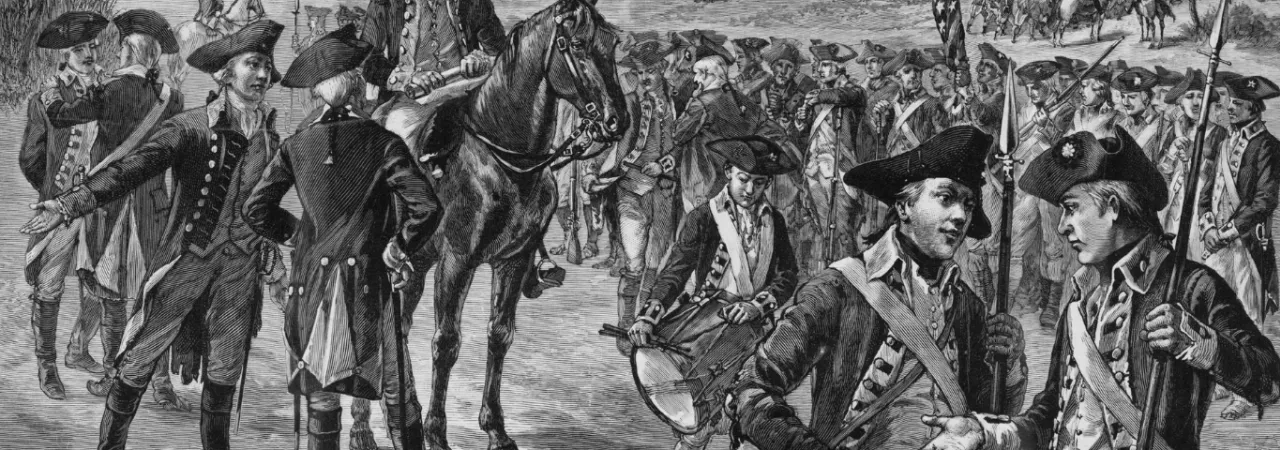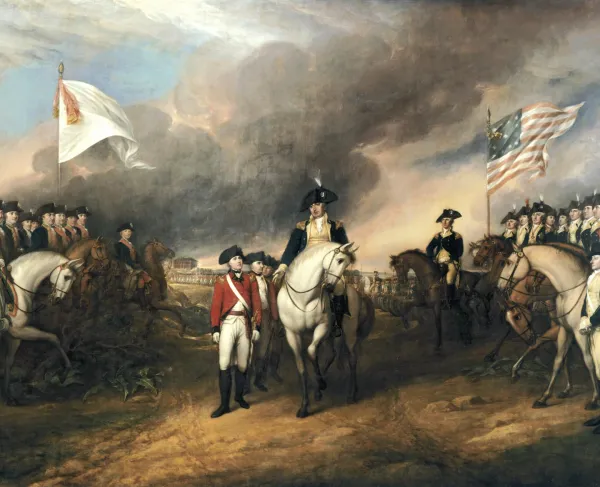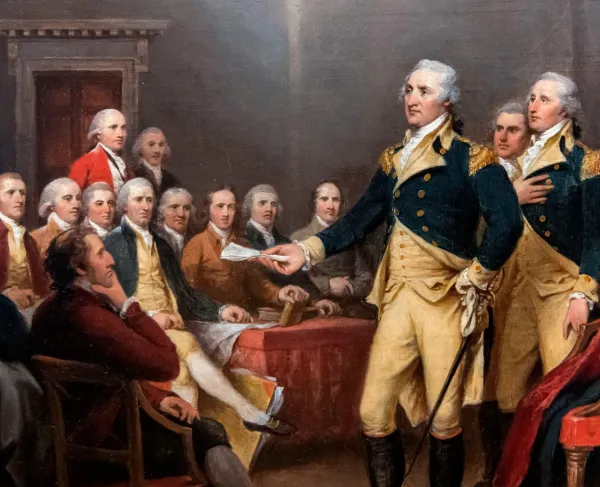
Disbanding the Continental Army at New Windsor, New York on November 3, 1783.
1. On June 14, 1775, the Continental Army was created.
The Second Continental Congress, meeting in Philadelphia decided to establish an army for common defensive purposes. This included absorbing the forces then besieging Boston and stationed in New York City. Congress authorized the raising of troops from different colonies to add to the New England troops that comprised the bulk of the forces at that time.
Learn more: Continental Congress: Unprepared for War.
2. Each state was designated a specific quota to fill a line in the army.
The designation of a line refers to the quota set by the Continental Congress for the number of regiments assigned to a particular state to be raised.
Learn more The Soldiers of the Continental Army.
3. As young as 16 years old and $6.25 a month.
A soldier had to be at least 16 years of age to be mustered in on their own accord. A private in the Continental Army was paid $6.25 a month. States often provided other incentives, including enlistment bonuses, land grants, or other tangible benefits to induce enlistment.
Learn more: Soldier Pay in the American Revolution.
4. A standard uniform
At the start of the conflict, soldiers wore an array of clothing, including what they had worn from home. In 1779, George Washington ordered that Continental soldiers serving in the infantry would be issued blue coats, white waistcoats with the facings (outline and cuffs) being various colors to denote the branch or their home state.
Learn more: The Fighting Man of the Continental Army.
5. Size and enlistment of the Continental Army.
Although numbers varied as soldiers came and went through the eight years the Continental Army served in the American Revolution historians believe that approximately 230,000 soldiers served. In addition, there were Continental forces in the northern and southern theaters as well.
Learn more: Militia, Minutemen, and Continentals: The American Military Force in the American Revolution.
6. Death in the American Revolution.
The total number of American casualties stands at approximately 24,000. Out of that number 8,000 are believed to have been killed in action whereas another 16,000 died of illnesses or starvation. In addition, 25,000 men suffered wounds during the war.
Learn more: Common Diseases of the 18th and 19th Century.
7. The end of the Continental Army.
The last units serving under a Continental designation officially mustered out on June 20, 1784, after a session of Congress determined a set number of troops needed to secure the frontiers of the United States.
Learn more: Western Department: Frontier of the Revolution.
8. The Continental Army or "Armies."
Although George Washington did command the principal Continental army throughout the entire war, there were Continental armies that operated in the northern department, most successfully during the Saratoga Campaign and in the southern department, first at Charleston, then Camden, and finally with Major General Nathanael Greene.
Learn more: The Saratoga Campaign.
9. An integrated military force.
Yes, the Continental army had soldiers of multiple ethnicities within the ranks, including African Americans and Native Americans. At one time, nearly 10% of Washington's army consisted of Black soldiers. This would be the last time, until the Korean War, that the United States Army had integrated units. In addition, men of multiple European nations served in the ranks throughout the entire war.
Learn more Black Soldiers of the Revolutionary War.
10. Major victories of the Continental armies.
The Continental army won major victories at Saratoga in September and October 1777 and also at the Siege of Yorktown in October 1781. Harsh winters such as Valley Forge in 1777-1778 and Morristown, 1778-1779, especially, helped mold the fighting force. Although the Continental armies lost more battles than they won against the British, key victories ensured eventual independence. Militia and partisan forces assisted in the overall victory as well.
Learn more Guided Tour of the Yorktown Battlefield.
Related Battles
330
1,135
1,900
324





